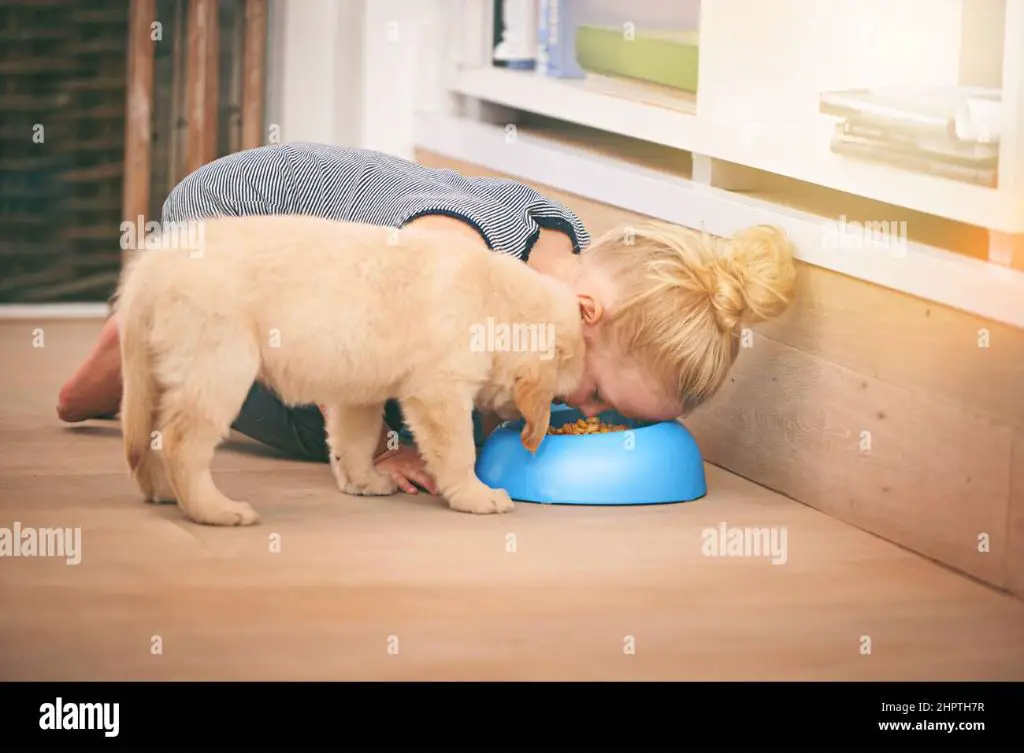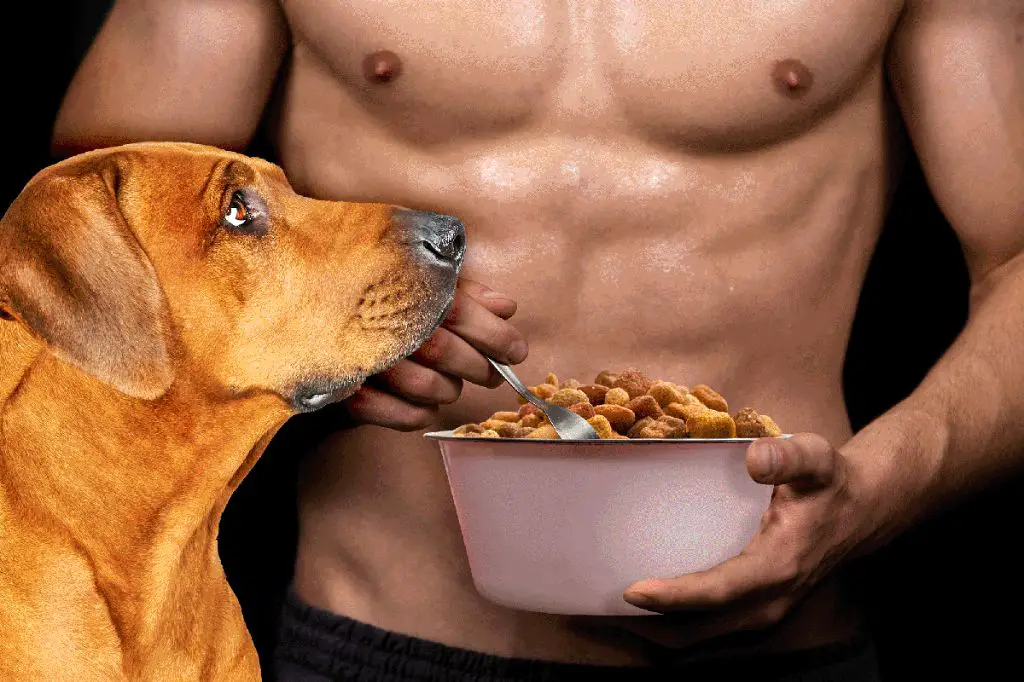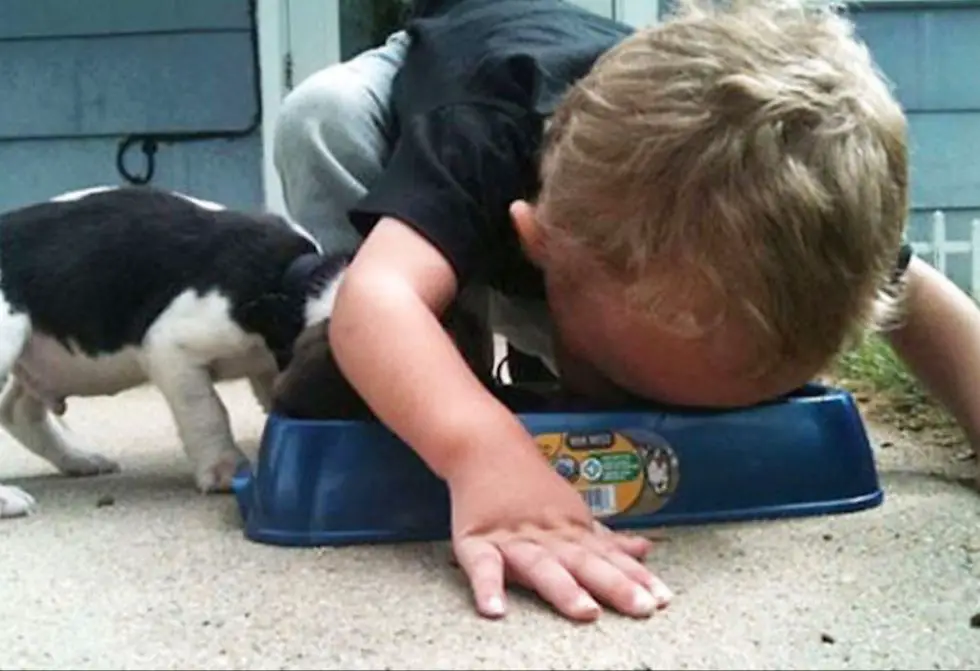Introduction
It may come as a surprise that around 2% of kids in the United States and Canada have tried eating dog food at some point during childhood. It is certainly an unusual phenomenon, yet it is not uncommon for curious kids to indulge in bizarre culinary experiments. Dog food appeals as a tempting forbidden fruit simply because of its taboo nature. Though eating pet food is generally considered unsafe for human consumption, there are complex psychological factors that lead some kids down this path.
Taste Curiosity

Kids are naturally curious about tastes and textures. As children explore the world around them, they use all of their senses including taste. Children put items in their mouths as a way to satisfy their curiosity and learn about different flavors and textures. Eating non-food items like dirt or grass provides sensory stimulation. For some kids, this curiosity extends to pet food. The smell and appearance of dog food intrigues them to sample a bite. The unique flavors and crunchy bits create an appealing texture. While potentially unhygienic and unsafe, tasting dog food satisfies a child’s inquisitiveness about new tastes and experiences. This investigative nature is developmentally appropriate, though it requires supervision to avoid potential health risks.
Mimicking Behavior
One common reason kids eat dog food is because they see pets eating it and want to try it themselves. Dogs and cats seem to really enjoy their food, so naturally, kids become curious what it tastes like. At a young age, children learn by imitating others, especially parents and pets. If a child sees their beloved dog or cat excitedly eating kibble every day, they may want to copy that behavior. Kids don’t understand that pet food contains different nutrients tailored for animals. To a child, if it’s good enough for their pet, it must be good enough for them too. This mimicking can become a form of roleplaying or imitation as the child acts out what it’s like to be a dog or cat. Of course, parents need to stop this behavior and explain why pet food is only for animal consumption. But it’s a natural inclination for young kids to want to try dog food simply because they see their furry friends enjoying it so much.
Media Influences
Cartoons and movies sometimes depict characters, especially dogs, happily eating dog food out of a bowl. For a young child, seeing animated dogs or comedic actors eagerly gobbling up dry kibble can make it seem like dog food must be tasty. When the dog food is presented in a colorful, appetizing way on screen, a kid may decide to sample some themselves. Even live-action films can influence kids, when they show real dogs excitedly chowing down on crunchy bits. Of course movies use tricks and careful editing to make the dog food look as palatable as possible. But a child doesn’t understand those techniques and takes the depiction at face value. If the on-screen dogs love eating it so much, the average kid assumes it must be delicious enough for human consumption as well.

Poor Supervision
Lack of parental supervision can lead to dog food experimentation. Children with minimal oversight may get into things they shouldn’t, whether from curiosity or simple opportunity. With inadequate guardians around, kids are more likely to act on impulses without considering potential consequences. They may see the dog eating its food and decide to try some themselves, unaware of the health risks. Proper supervision and guidance from caretakers is essential to keeping children safe and on the right path. Children, especially young ones, need monitoring to prevent harmful exploration and enforce important boundaries. When left to their own devices, kids can make questionable choices, like sampling pet food. Greater vigilance from parents and guardians serves an important protective role.

Nutritional Deficiencies
One factor that can lead kids to eat dog food is not receiving proper nutrition from regular food. Growing children have high caloric needs to fuel their rapid development and active lifestyles. If their regular diet lacks essential vitamins, minerals, protein, or fat, they may instinctively seek out other sources to fulfill this nutrition gap. Dog food can seem appealing as it contains meat, fat, and protein. The packaging also lists vitamins and minerals, making it appear like a nutritious choice.
Without adequate nutrition from regular food, children can experience fatigue, irritability, and poor concentration. They may then resort to irrational food choices in an attempt to feel better and regain energy. Parents should ensure kids eat a balanced diet with plenty of fruits, vegetables, whole grains, dairy, and protein. If picky eating is an issue, consider adding a children’s multivitamin or speaking to their pediatrician about nutritional supplements. Meeting daily nutritional needs from regular food can prevent unusual cravings and make dog food less tempting.
Mental Health Factors
For some children, eating non-food items like dog food may be a sign of an underlying mental health condition. Pica is a disorder characterized by cravings for and consumption of non-nutritive substances like dirt, chalk, paper, and clay. It’s most commonly seen in young kids ages 2-3, as well as in pregnant women and those with developmental disabilities or mental illnesses like schizophrenia.
While the causes of pica aren’t fully understood, it’s thought to be linked to mineral deficiencies like iron and zinc, as well as psychological factors. Stress, boredom, loneliness, and appetite disorders may also contribute to pica. Whatever the cause, pica can be dangerous if a child ingests something toxic. Parents noticing this behavior should have their child evaluated by a doctor.
So in some cases, a child eating dog food could be a sign of pica brought on by an underlying physical or mental condition. Getting to the root cause is important to protect the child’s health and safety.
Peer Pressure
One significant reason kids may try eating dog food is due to peer pressure from friends. Many children feel the need to fit in with their social group and not be left out. Eating something gross or taboo like dog food can become a dare or challenge among friends. Kids may egg each other on, teasing those afraid to participate as “scaredy cats.” Giving in to this pressure and eating dog food can be a way for kids to prove themselves and gain acceptance. The social hierarchy and desire for approval within childhood friend groups should not be underestimated. Kids will often do embarrassing or dangerous things just to avoid rejection. Eating dog food as part of a dare may start as a joke, but turn serious if the peer pressure intensifies. While most kids grow out of these extreme food challenges with age, the need to fit in can override common sense. Parents and educators need to address the psychology behind risky groupthink behavior and provide guidance. With maturity comes the confidence to make good choices independently.

Boredom
When kids are frequently left unsupervised with little to entertain them, they may turn to unusual or even inappropriate items for amusement. Dog food, with its strange look, smell and texture, can seem like an exciting novelty to bored children. Unfilled hours and a lack of more constructive activities can lead kids to experiment with dog food simply as a way to spend time. Without parents, caregivers or siblings engaging them in games, play, conversation or other enriching pursuits, dog food can become a source of entertainment for kids seeking stimulation.
Children left to their own devices will often gravitate toward anything new and different to alleviate boredom. Trying dog food allows them to explore and learn through their senses of taste, smell, touch and sight. The curiosity of youth plus an abundance of free time and freedom can be a recipe for testing boundaries. Kids may recognize that eating pet food crosses a line, which makes it more intriguing to rebellious or inquisitive children. Whether the motivation is sensory stimulation or flouting rules, dog food presents an appealing diversion from monotony when kids are alone and unoccupied.
Conclusion
In summary, there are several reasons why children may try eating dog food as kids. The most common factors seem to be curiosity about the taste, mimicking the behavior of pets, influences from cartoons or movies, lack of supervision from parents, nutritional deficiencies, mental health issues like pica, peer pressure from siblings or friends, and simply boredom.
To prevent kids from eating pet food, parents should keep an eye on their children, especially when young and impressionable. Make sure to provide a healthy, balanced diet so nutritional needs are met. Have open conversations about peer pressure and set clear rules about off-limit foods. Keep kids engaged with activities and toys to avoid boredom. Speak to a doctor if concerns arise over mental health, nutrition or abnormal eating patterns.
While eating dog food may seem harmless for a curious child, the habit should be redirected. With compassion and care, parents can understand the underlying reasons and find solutions.